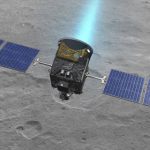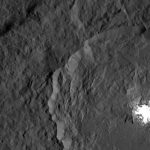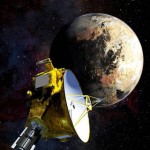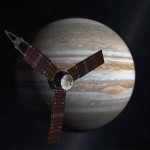2017/12/13

Image Details
Mission: Dawn
Target: Ceres
Spacecraft: Dawn
Instrument: Framing Camera
Image credit: NASA/JPL-Caltech/UCLA/MPS/DLR/IDA
オリジナル記事:
Dawn XMO2 Image 7
This image from NASA’s Dawn spacecraft shows Occator Crater on Ceres, with its signature bright areas. Dawn scientists have found that the central bright spot, which harbors the brightest material on Ceres, contains a variety of salts. The brightest parts of these features are overexposed in this image, which had an exposure time intended to capture details in the surrounding terrain. Shorter exposures allow details within the brightest areas to be seen, as in PIA20653.
Dawn took this image on Oct. 18, 2016, from its second extended-mission science orbit (XMO2), at a distance of about 920 miles (1,480 kilometers) above the surface. The image resolution is about 460 feet (140 meters) per pixel.
日本語訳
このNASAの探査機ドーンの画像は、セレスのオッカトルクレーターとその特徴的な光っている地帯を写しています。 ドーンの科学者たちは、セレスの明るく輝く物質がある地帯の中心の明るい場所には様々な種類の塩が含まれていることを発見しました。 これらの明るく輝く地帯のうちで最も明るいところは、周囲の地形の詳細を撮影するための露光設定では、露出オーバーになってしまっています。 露出を短くすると、PIA20653のように最も明るい領域の詳細がわかるように撮影できます。
この画像は、ドーンが2016年10月18日に、第2の延長ミッションの軌道(XMO2)からセレス地表より約920マイル(1,480Km)の距離で撮影しました。 画像の解像度は1ピクセルあたり約460フィート(140m)です。
訳者注:
セレスの発光部についてはNASAの科学者たちは塩の成分の堆積物が光を強く反射しているものだと考えています。
参考:ついに決着!セレスの謎の発光部の正体 [2016.06.30]
記事中に出てくるPIA20653とは以下の画像です。

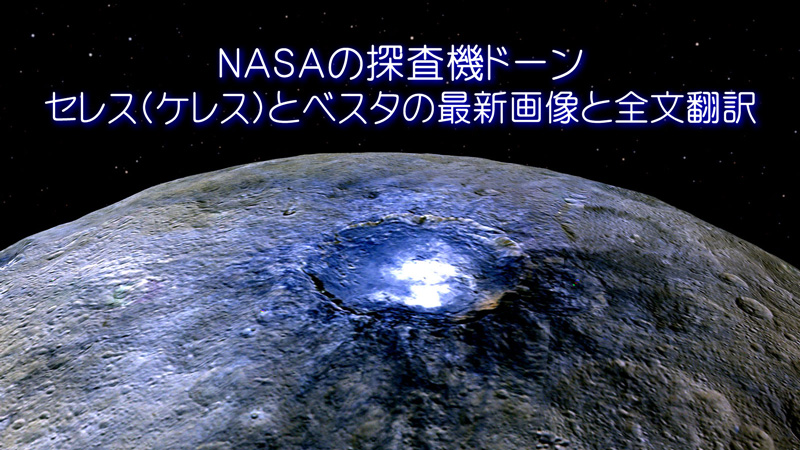
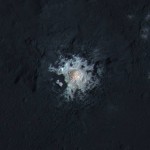
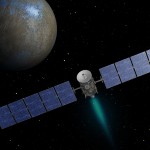
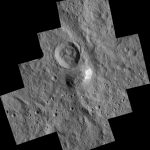
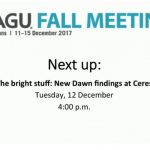
![最新高解像度カラー画像!セレスの謎の発光部 [2016.04.20] 最新高解像度カラー画像!セレスの謎の発光部 [2016.04.20]](https://ceres.kyoto-svp.com/wp-content/uploads/2016/04/pia20358_main-150x150.jpg)
